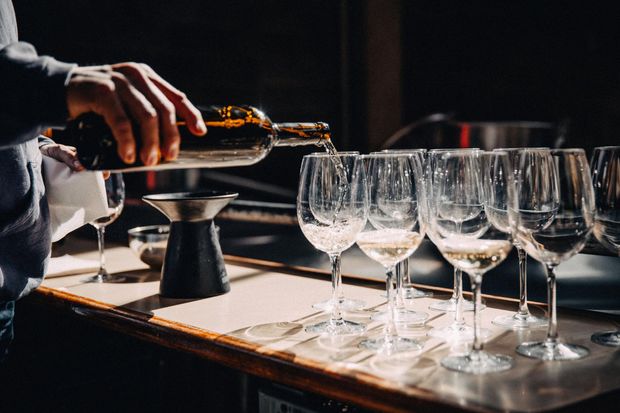One of my favorite short stories is called Taste, and it’s by British novelist Roald Dahl.
In it, wealthy stockbroker Mike Schofield offers his daughter’s hand in marriage to his pompous friend Richard Pratt IF he can identify a rare Bordeaux from taste alone. What follows is Mr. Pratt’s uncanny, masterful unfurling of the mystery wine, its flavors, aromas, and almost human character:
“This—this is a very gentle wine, demure and bashful in the first taste, emerging shyly but quite graciously in the second ... Then, in the after-taste, delightful consoling and feminine, with a certain blithely generous quality that one associates only with the wines of the commune of St. Julien.”
To the average reader, this rather blusterous account is incredibly impressive, even unimaginable as a feat, like swimming in Arctic waters or levitating. (Yes, Mr. Pratt correctly identifies the wine ... but there is a tremendous twist, which I’ll reveal at the end of this article.)
For YOU, however, the wine tasting ceremony and mastery of palate and nose is no party trick. Rather, it needs to be SECOND NATURE if you are to pass a high-stakes practical tasting exam like the WSET® Level 3 in wine. You can learn the textbook back to front but the more nuanced and subjective art of wine tasting, assessment, and identification is a different story.
That’s why Certified Wine Educator and Master of Wine Candidate Sarah Looper and I (Thea Beckman) wrote this guide featuring tasting tips for the WSET* 3 Exam. These hacks are exactly what you need to prepare—and pass— the practical, tasting component.
- Know what is required of you
- Practice the SAT until it becomes second nature
- Master the theory behind tasting & evaluating wine
- Use Brainscape to internalize the facts
- Learn the logical order of aroma and flavor variables
- Squeeze those extra marks out
- Personal preparation for the WSET 3 practical exam
Oh, and by the way: these wine-tasting tips are the perfect complement to Brainscape's expert-curated WSET Level 3 flashcards, which cover all of the content in the official textbook.
Wine glasses ready? Let’s go!
Know what is required of you

The WSET Level 3 exam consists of two units, the second of which is the Analytical Tasting of Wine, a 30-minute practical exam in which you are required to blind taste and assess two still wines: one white and one red. These may be taken from any of the recommended tasting samples.
The WSET 3 tasting exam will test your ability to accurately describe and evaluate these wines, following the Systematic Approach to Tasting® (SAT).
There are 20 marks allocated to the description and assessment of the white wine and 21 marks (for some reason) for the description and assessment of the red wine. You need to score a minimum of 55% for the theory and practical exam EACH in order to secure that prestigious WSET 3 pin.
The good news: marks are NOT subtracted for incorrect answers. You don’t even need to correctly identify the actual wines in order to pass with distinction, as long as you describe them accurately and thoroughly, following the SAT.
Pro Tip: For Unit 1 (The Theory of Wines of the World), check out our guide on how to take a WSET 3 practice test, which offers advice on answering both the multiple-choice and short-written answer sections in the exam.
I also recommend that you read what exam topics to expect in the WSET Level 3 in your preparation. And of course, don't miss our comprehensive guide on how to study for the WSET 3 more efficiently.
Practice the SAT until it becomes second nature
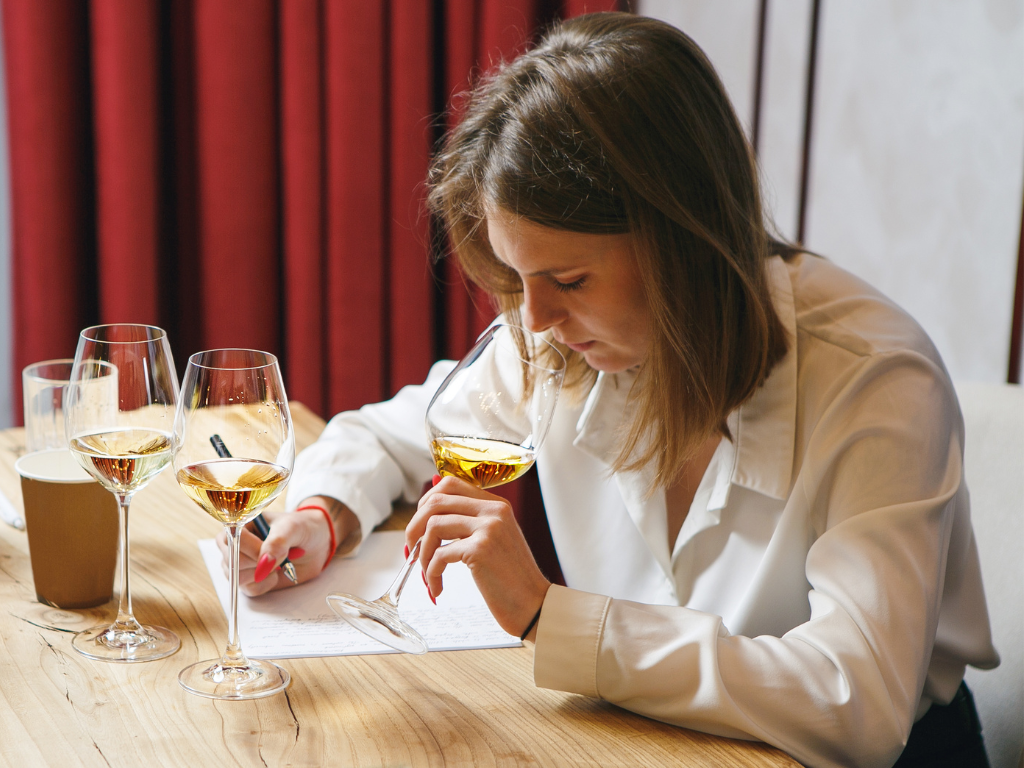
To pass the WSET 3 tasting exam, it is crucial that you are comfortable and familiar with the WSET Systematic Approach to Tasting® (SAT), the methodology for tasting and evaluating wine. If you don’t follow the SAT’s algorithm—and demonstrate your mastery of it to the examiner—you’ll lose crucial points.
So, our second WSET 3 tasting tip is to practice the SAT until it becomes second nature ... and until it exerts as little intellectual strain as walking, breathing, or watching an episode of Vanderpump Rules. The goal is to march into the exam as a well-oiled tasting machine. And this comes down to practice, practice, practice.
Every opportunity you get, blind taste wine. Scrutinize the color against a white tablecloth or piece of paper; swirl the wine and sniff deeply, appraising the primary, secondary, and tertiary aromas; and then take a sip, rolling it around your mouth and tasting for fruit, acid, tannin, alcohol, and balance.
Thankfully, wine tasting never gets old or boring, no matter how many times you do it.
And if it does start getting boring, swallow.
Master the theory behind tasting & evaluating wine

While you can learn a whole lot and gain much confidence by sipping your way through enough wine to sink a Maersk container ship, there’s a TON of foundational, theoretical knowledge you unavoidably have to learn in order to ace the WSET 3 practical exam. For example:
- What are the different color descriptors for white wines (lemon-green, lemon, gold, amber, and brown); red wines (purple, ruby, garnet, tawny, and brown); and rosé wines (pink, salmon, and orange)?
- What is the difference between primary, secondary, and tertiary aromas, and what are examples of each?
- What effects do malolactic fermentation and aging in French, American, or Hungarian oak typically have on the flavors and aromas of wine?
- What are the alcoholic ranges for light, medium, and full-bodied wines?
- And what are the five quality levels of wine and what do they tell us about a wine’s balance, length, complexity, and intensity of flavor and aroma?
This is just the tip of the iceberg. So, master the foundational knowledge—the theory, the descriptors, and the common flavor and aroma characteristics—of the principal still wines of the world.
Now, this is a LOT to learn. The WSET 3 is a monster of an exam. But there is an incredibly useful study tool that can mean the difference between passing with distinction or failing altogether ...
Use WSET 3 flashcards to internalize the facts
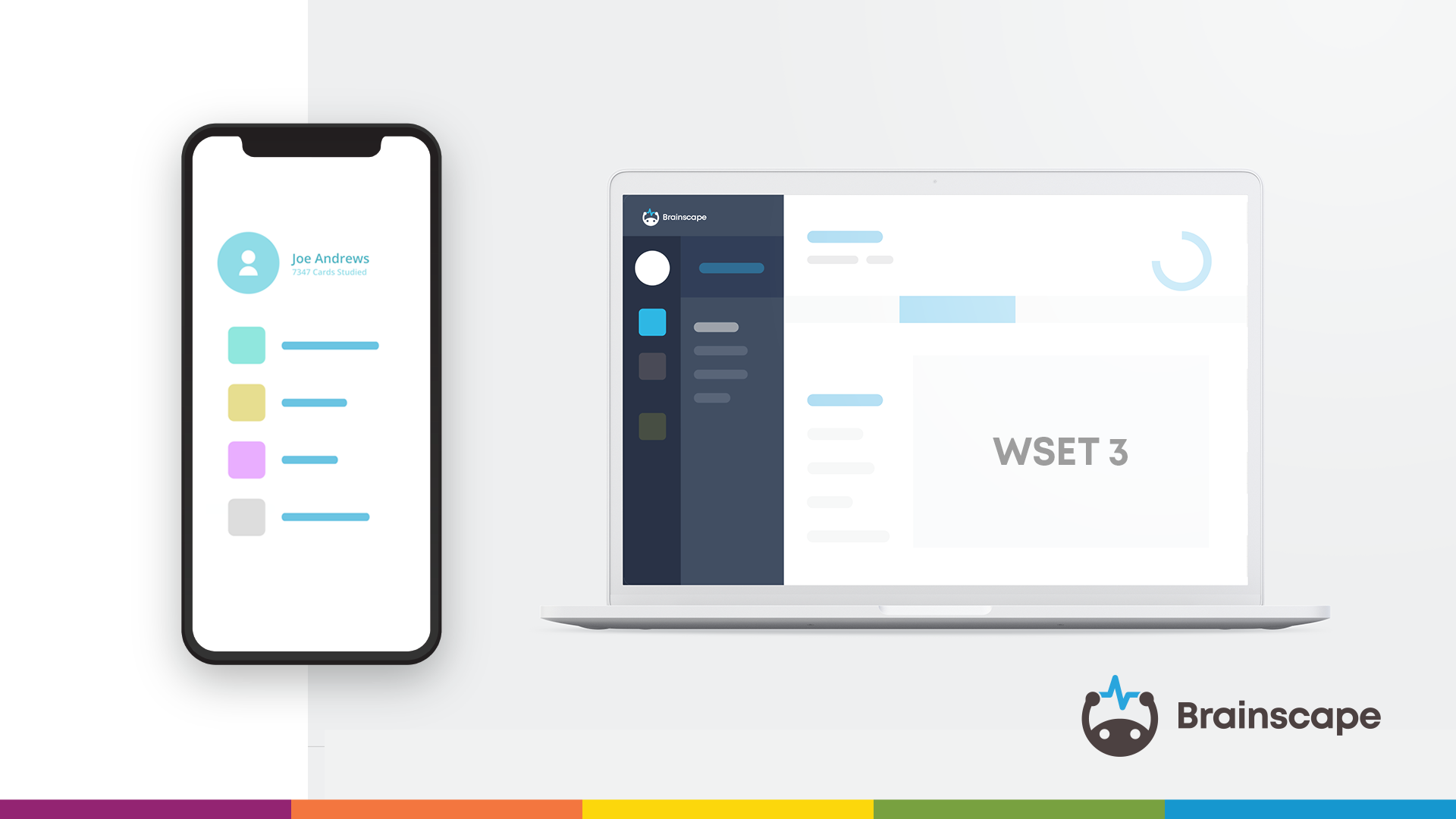
Brainscape is the world’s smartest web and mobile flashcard app (if we do say so ourselves). Together with our panel of subject-matter experts and wine educator Sarah Sutel, we have curated a certified WSET Level 3 flashcard collection that covers absolutely all of the content taught in this prestigious wine course.
You may be particularly interested in the Tasting + Assessing Wine flashcards deck, because it runs students through the essential theory to know for the practical component of the exam.
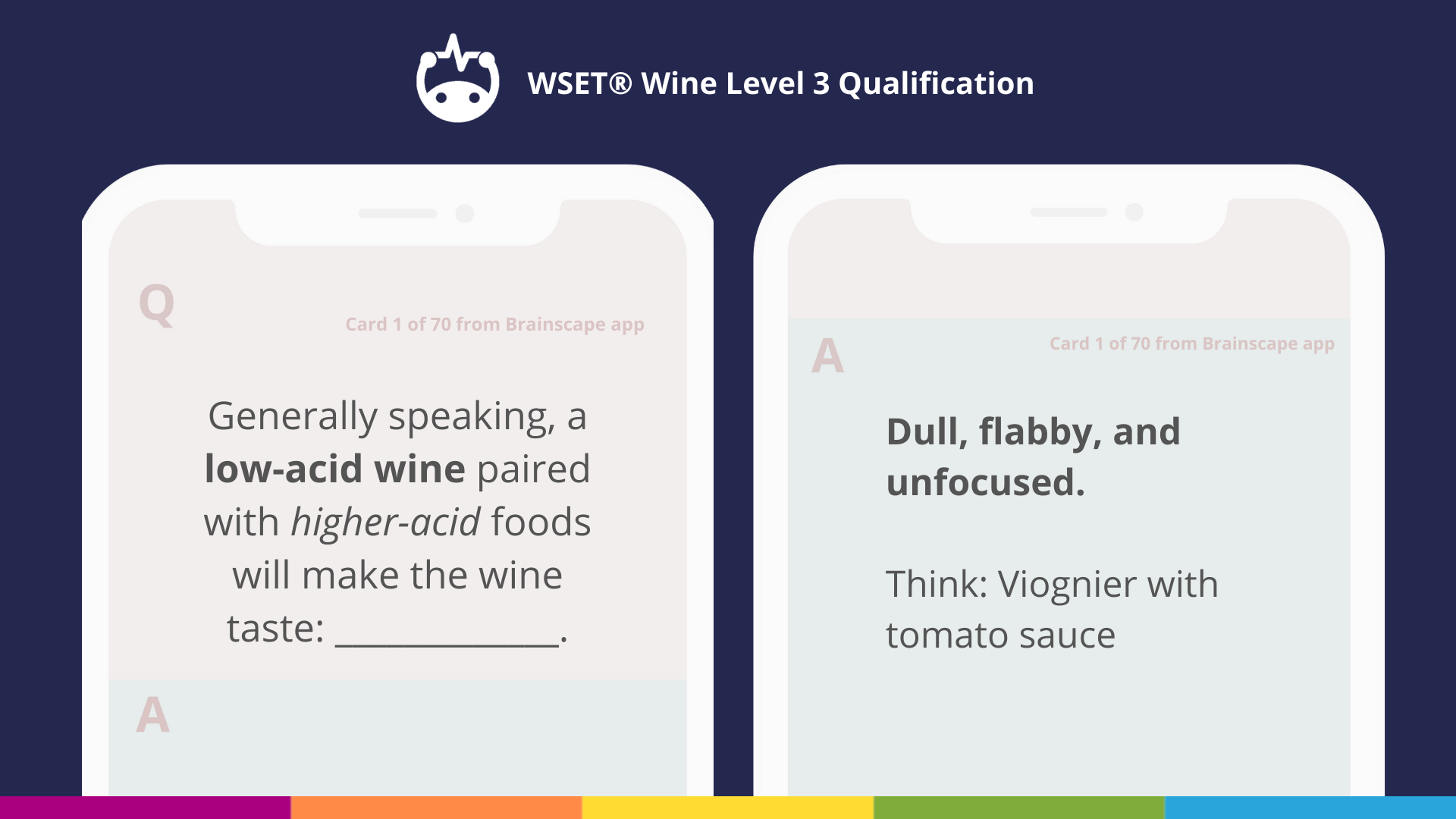
Why is Brainscape such a powerful study tool?
Brainscape isn’t just some clever study hack. Behind the colorful display, nifty features, and convenience is a hyper-intelligent algorithm that leverages decades of proven cognitive science research.
This algorithm is designed to help our users quickly internalize and permanently learn and remember information in order to pass high stakes examinations like the WSET, the Bar, MCATs, and more.
Here's how... but skip to the next tip if you don't care how the sausage is made...
Active recall: Our flashcard app compels you to answer questions from memory alone: without any cues or clues. This engages your powers of active recall, which is a far more powerful way to establish deep memories of all that wine information than merely reading the WSET 3 textbook or selecting answers from a multiple-choice list.
Metacognition: Once you have answered a flashcard, you are required to rate how well you knew the answer on a scale of 1 (not at all) to 5 (perfectly). This compels you to think about your thinking, thereby engaging metacognition and establishing an additional neural pathway for remembering.
Spaced repetition: Based on your self-assessment in the previous point, Brainscape’s algorithm will regularly repeat the WSET 3 flashcards you didn’t know well at optimal intervals so that you can master them over time.
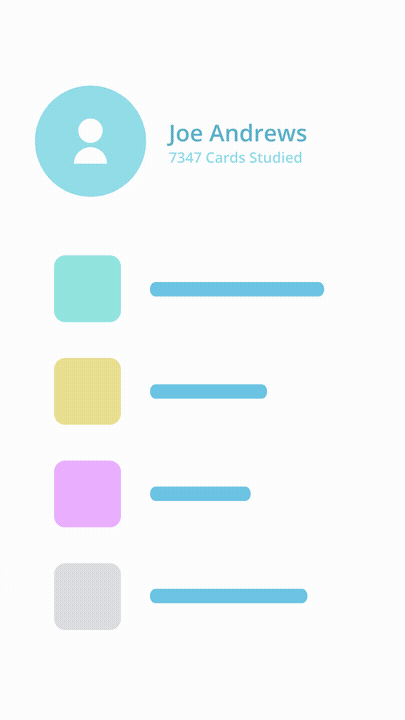
The combination of these key features is what makes Brainscape such a powerful, effective, and efficient study tool, which is why we recommend you use the WSET 3 flashcard collection to internalize the necessary facts and theory.
Now, let’s get to the advice that is more specific to the practical aspect of the WSET 3 tasting exam!
Learn the logical order of aroma and flavor variables

Now, let’s pop open the wine and get to the fun part of this gig!
Listing all the aromas and the flavors you detect from swirling, sniffing, and sipping the wines is where you get to demonstrate your mastery of nose and palate. And while much of this ability comes from practice and experience, there is a structure—a logical order of variables—you can work through in your blind tasting to make sure you write down every last possible point in order to score MAXIMUM marks:
- Primary aromas: Fruit, Floral, Herbaceous, Herbal, Spice, Others (FFHHSO)
- Secondary aromas: Yeast, Malolactic fermentation, Oak (YMO)
- Tertiary (if any) aromas: Deliberate oxidation, Fruit development for white wine, Fruit development for red wine, Bottle age for white wine, Bottle age for red wine (DFFBB)
- Flavor components: Acid, Alcohol, Body, Tannin (AABT)
Memorizing these acronyms will equip you with a logical framework to follow when writing down your tasting notes for a blind wine.
Let’s look at an example:
You are given a white wine to assess and identify so you start by unpacking the primary aromas and flavors you detect in the wine, following the “FFHHSO” principle”.
Starting with fruit, you write down citrus (lemon to be more precise) and green apple with a shade of passion fruit. Moving on to floral, you detect a whiff of peach blossom and the third element, herbaceous notes, is overpowering with green bell pepper and fresh cut grass. For herbal and spice there’s nothing to add but for others, you think—"Could it be? Is that ... is that fresh pea shoots?"
With the primary aromas done you move on to the secondary aromas (YMO: yeast (biscuit, brioche, bread), malolactic fermentation (butter, cheese, cream), and oak (vanilla, cloves, nutmeg, etc.)) HOWEVER, in the absence of any of these rich aromas, you conclude that this wine did NOT rest on the lees for long, has NOT undergone malolactic fermentation, and was NOT aged in oak.
Next, you move on to the tertiary aromas (DFFBB) and then the flavors (AABT) ...
Do you see where we’re going with this?
Working through these acronyms for aromas and then flavors:
- Gives you a structure to follow during the exam, which is particularly useful given the fact that you may feel a little nervous.
- Compels you to hunt out the more subtle aromas and flavors you may have missed because of the presence of more overpowering elements, like citrus and bell pepper.
- Reminds you to account for every last element, which prevents you from leaving a single mark on the table.
Squeeze those extra marks out
There is a crafty way you can potentially squeeze a few extra marks out when asked to write down the various descriptors for a wine’s aroma and flavor profiles.
For example: when you take a whiff of a white wine, you may identify lemon. That’s a great start: write it down. But now, ALSO write down any other closely related descriptor you can think of, like lemon oil, lemon peel, lemongrass, preserved lemon, and Meyer lemon. Doing this squeezes extra juice out of the initial “lemon” descriptor, possibly even scoring you an extra mark or two.
Take it a step further: does it smell strictly like lemon or are there any other citrus notes you can detect? For example, lemon and lime are closely related so you can safely assume that if a wine smells like one, you can write down the other. Then, do the same for lime: lime pulp, lime zest, and so on.
The same applies for apple and pear, which are so closely related, you’re leaving points on the table if you mention one but not the other.
Once you’re done with the fruit, move on to the flowers. Does it smell like pink flowers? Then write down at least three pink flowers (pink rose, carnation, and peony). Or does it smell like yellow flowers (honeysuckle, buttercup, dandelion, daffodil, or even chamomile)? Even think of altitude: alpine (cool, crisp) versus valley floor (warm, floral).
Don’t be afraid to branch out but, by the same token, don’t go overboard. If you write “lemon zest” make sure the wine reasonably smells like lemon zest.
Personal preparation for the WSET 3 practical exam
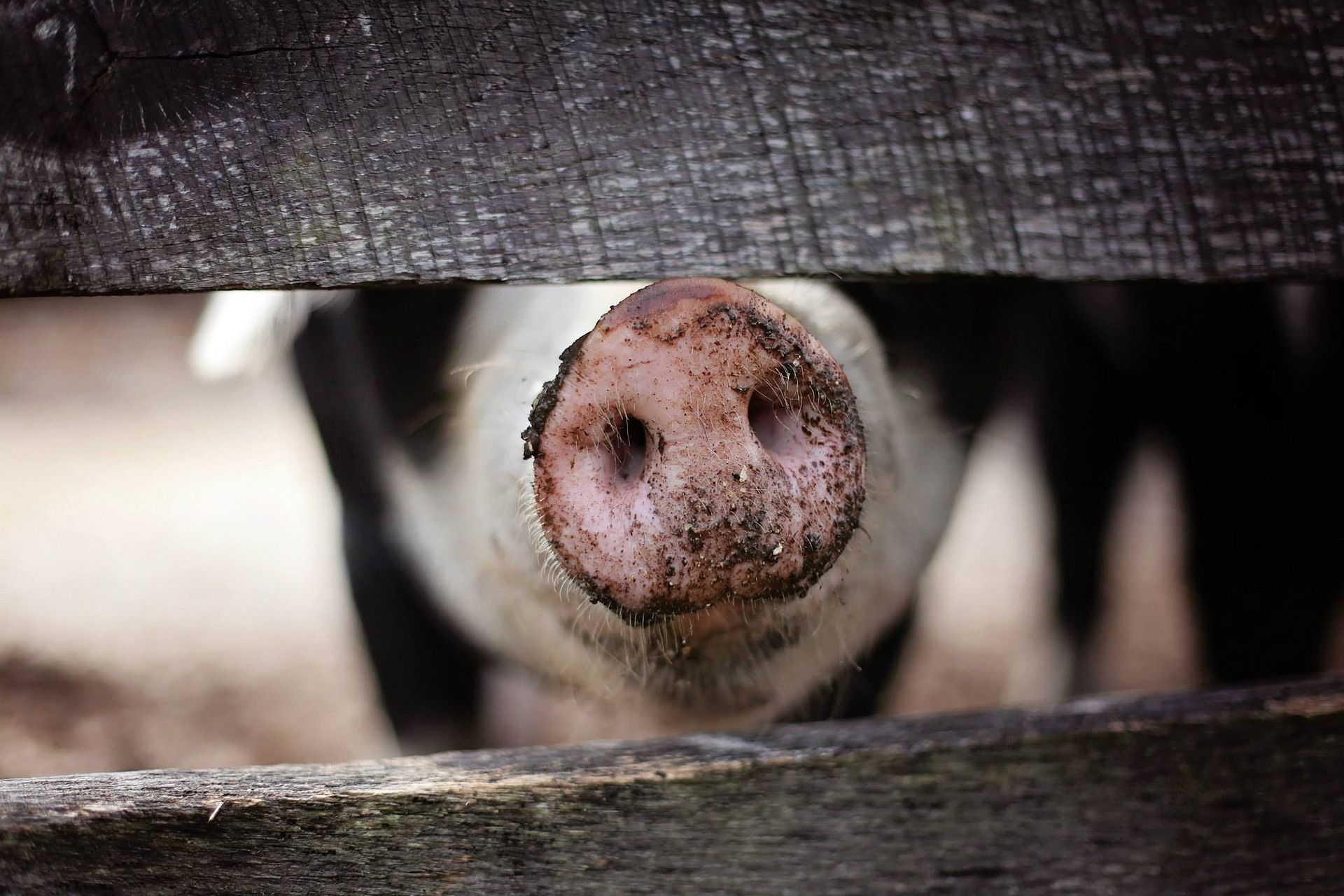
The right personal preparation for a wine tasting is key. And I’m not even talking about basic hygiene (one would hope that’s a given).
I’m talking about things like avoiding perfume, which can interfere with or even block entirely your ability to perceive the aromas in the wine you’re tasting. Similarly, having recently brushed your teeth can greatly influence your taste perception and this can turn a gorgeous, velvety Burgundy into a brew as bitter as bile.
Here are some things to avoid the day of (and the night before) the WSET 3 tasting exam:
- DON’T wear lotions, perfumes, or anything scented. You’ll just throw your nose (and the noses of your classmates) off the delicate aromas of the wine.
- DON’T brush your teeth or eat a mint right before your exam. By all means, brush your teeth in the morning (good oral hygiene is sexy) but make sure there’s a good hour or two between that minty toothpaste/mouthwash and your practical wine exam.
- DON’T eat anything overly flavorful or spicy. Your greatest asset for the practical exam is a neutral, perceptive palate ... so a lunch of pungent curry, garlicky pasta, or a burrito swimming in hot sauce isn’t the smartest idea.
- DON’T burn your mouth! Okay, so no one does this intentionally, but just be extra careful with the temperature of your food in the days leading up to your exam. Burning your tongue will WRECK your ability to taste.
- DON’T drink (much) the night before. Not only will you feel tired, sick, and muddled the day after, but your taste perception will be impeded by the noxious alcohol fumes your lungs are desperately pumping out of you. I know you may want to "practice" the night before, but err on the side of caution and go to bed early (and booze-free).
Pro Tip: An excellent trick a lot of wine folk do before leaving the house for a wine tasting is swish wine around their mouths (after brushing their teeth). Use a light to medium bodied wine, red or white, something that has medium-plus acidity, and is in the neutral-ish camp, such as Chablis, Muscadet, or Sangiovese. This will get your salivary glands going, which will help you taste better. Also, the first sip you take won't shock your palate.
A final word on the WSET 3 practical exam
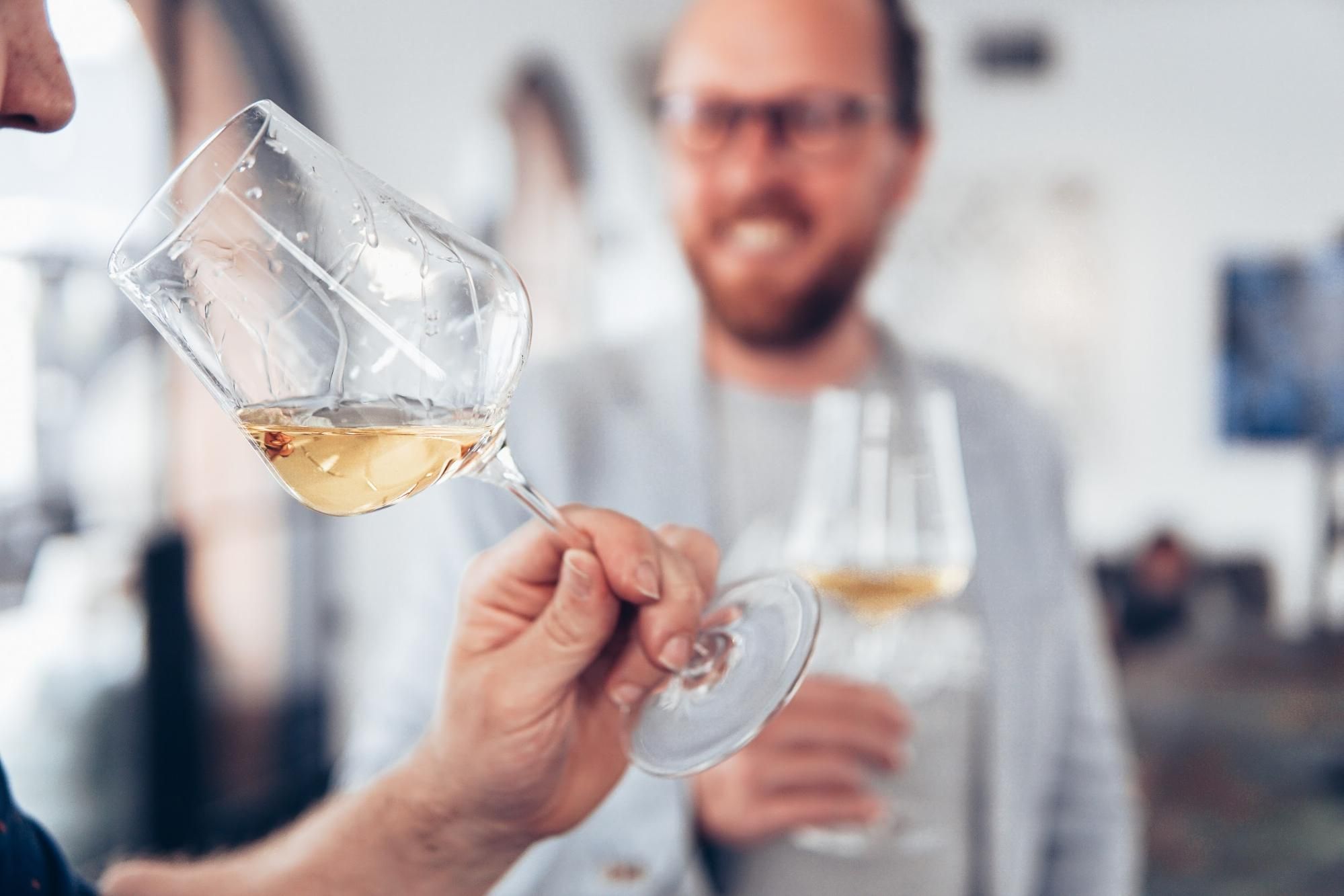
He cheated.
Richard Pratt cheated.
If you want to read Roald Dahl’s short story, 'Taste', for yourself and find out how it ends, click on the link immediately and don’t read our next sentence (which gives it away).
Just as Mr. Schofield realizes in horror he’s lost the wager, the elderly maid comes to the dinner table and hands Mr. Pratt his reading glasses ... which he left in the study ... where Mr. Schofield had left the claret to breathe before dinner.
Busted.
Armed with the advice in this guide, you won’t have to revert to the same skullduggery to get what you want, which is that shiny WSET 3 lapel pin and the industry respect you have earned.
À votre santé!
Don't miss our other WSET Level 3 study guides:
- What are the exam topics on the WSET Level 3?
- How to study for the WSET Level 3 wine exam more efficiently
- How to answer WSET short-answer questions
- How to take a WSET Level 3 practice test
P.S. When you're ready to take your next step to WSET Diploma, we have expert-curated flashcards and study guides for all five modules!
*Disclaimer: Brainscape has worked with top wine experts to supplement the official publications and preparation offered by WSET.
